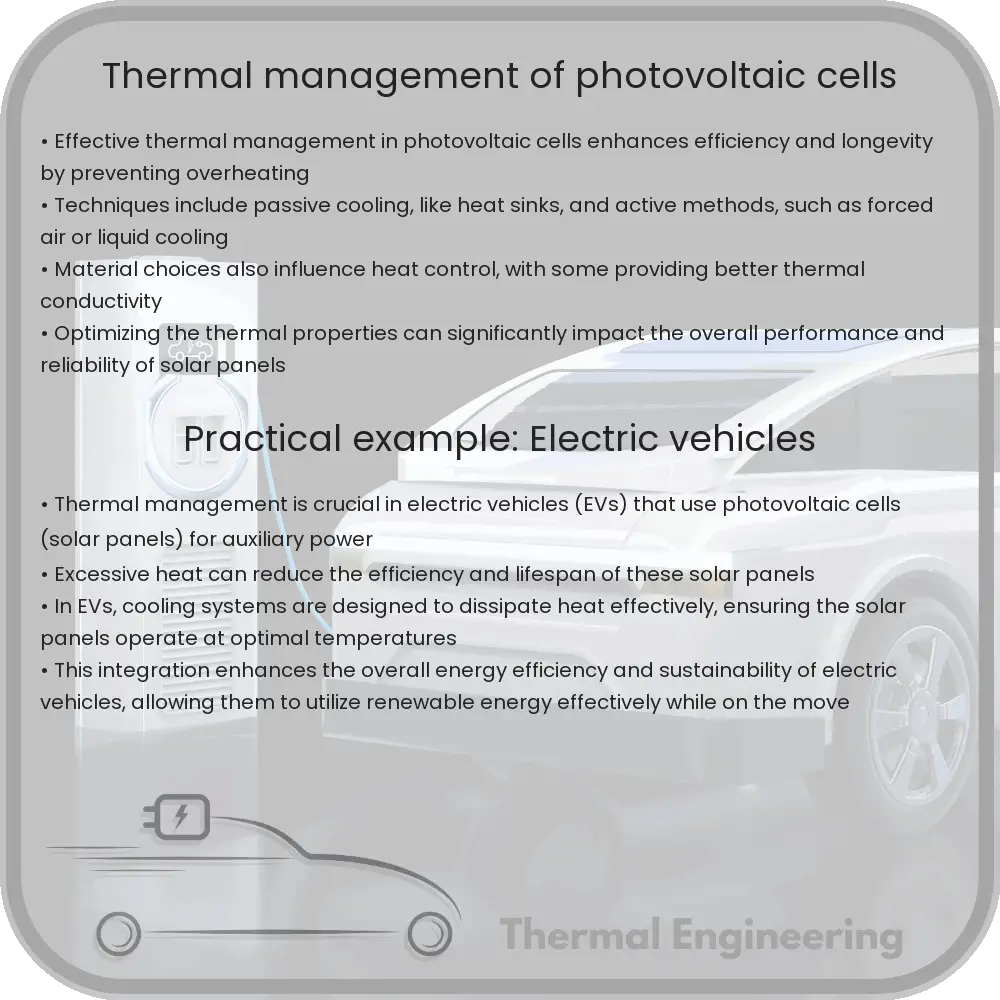Learn how thermal management in photovoltaic cells enhances efficiency and lifespan of solar panels by using cooling techniques and innovative materials.

Understanding Thermal Management in Photovoltaic Cells
Photovoltaic (PV) cells, the building blocks of solar panels, convert sunlight into electricity. While this technology presents a clean energy solution, it faces challenges, particularly related to heat. The efficiency of PV cells decreases as their operating temperature rises, thereby making thermal management a critical aspect of solar energy systems. This article delves into how thermal management in photovoltaic cells is achieved and why it is essential for enhancing both the efficiency and lifespan of solar panels.
The Impact of Temperature on PV Cell Efficiency
The performance of photovoltaic cells is highly temperature-dependent. Generally, as the temperature of a PV cell increases, its efficiency in converting sunlight into electricity decreases. This is because elevated temperatures can reduce the open-circuit voltage and increase the carrier recombination rate within the cell, which negatively affects its electrical output.
Most PV cells are designed to operate at maximum efficiency at around 25°C (77°F). However, under sunlight, the temperature of photovoltaic cells can reach 65°C (149°F) or higher, which significantly impairs their efficiency. The decrease in performance can be quantified by the temperature coefficient, typically around -0.5% per degree Celsius for crystalline silicon PV cells. This means that for every degree increase in temperature from the optimal 25°C, the efficiency of the cell drops by 0.5%.
Strategies for Managing Heat in PV Cells
The key to enhancing the performance and durability of photovoltaic systems is effective thermal management. Here are some of the common strategies employed to manage temperature in PV cells:
- Passive Cooling: This involves design and material choices that naturally dissipate heat without the need for external energy. Techniques include using heat sinks, reflective coatings, and improved airflow around the panels.
- Active Cooling: This method utilizes external energy sources to reduce the temperature of PV cells. Common approaches are forced air systems and water cooling arrangements, where a fluid medium is circulated to carry away excess heat.
- Phase Change Materials (PCMs): PCMs can absorb and release thermal energy during the process of melting and solidifying at certain temperatures, aiding in maintaining optimal operating temperatures for PV cells.
Benefits of Effective Thermal Management
Proper thermal management of photovoltaic cells can lead to numerous benefits:
- Increased Efficiency: Keeping the cells at optimal temperatures enhances their photovoltaic conversion efficiency, leading to higher electricity output.
- Extended Lifespan: High temperatures can accelerate the aging and degradation of PV cells. Effective cooling can slow down these processes, extending the lifespan of the solar panels.
- Improved Performance Stability: Thermal management helps in maintaining consistent performance even on very hot days, ensuring reliability and steady power generation.
Future Perspectives in Thermal Management of PV Cells
As the demand for renewable energy solutions like solar power increases, so does the necessity for efficient solar panel technologies. Innovations in thermal management include the integration of nanotechnology for better heat dissipation and the development of new materials with higher thermal conductivity. Ongoing research and improvement in this area are crucial to making solar energy more viable and efficient on a larger scale.
In summary, effective thermal management is essential for optimizing the performance and longevity of photovoltaic cells. Through a combination of passive and active cooling techniques, along with innovative materials like phase change materials, we can significantly improve the thermal response of solar panels, making solar energy a more robust and reliable power source.